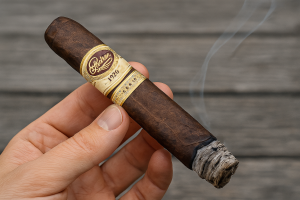How Much Nicotine Is in a Cuban Cigar? Nicotine Content Explained

When it comes to smoking cigars, especially premium ones like Cuban cigars, many enthusiasts are curious about the nicotine content. Understanding how much nicotine is in a Cuban cigar can help smokers make informed choices and ensure they are fully prepared for the smoking experience.
In this article, we will break down the nicotine content in Cuban cigars, explore the factors that influence nicotine levels, and provide tips on how to manage nicotine intake.
Complete Breakdown of Nicotine Content in Cuban Cigars
On average, a Cuban cigar contains between 100 to 200 milligrams of nicotine, though this amount can vary based on the size and specific blend of tobacco used. Cuban cigars are known for their quality, and the tobacco used in their construction is often grown in the ideal soil and climate conditions of Cuba.
Cuban cigars are often considered to offer a more balanced and sophisticated smoking experience. While the nicotine content may not be as high as some other cigars from regions like Nicaragua, they still pack a punch in terms of flavor and nicotine.
What Determines Nicotine Content in a Cigar?
Nicotine content in cigars varies due to several factors. These include the type of tobacco used, the size of the cigar, and the fermentation process While the nicotine content of a cigar can vary significantly, the key determinants include:
- Tobacco Leaf Type: The kind of tobacco used in the cigar plays a significant role in determining its nicotine content. Cuban cigars, for example, use tobacco from the Vuelta Abajo region, which is known for producing rich, full-bodied leaves.
- Cigar Size: Larger cigars contain more tobacco, and consequently, more nicotine. For example, a Churchill or a Double Corona will have more nicotine than smaller cigars like a Robusto or Panetela.
- Fermentation Process: The fermentation process affects how much nicotine remains in the tobacco leaves. Cuban cigars undergo a traditional fermentation process that can reduce the nicotine content slightly, ensuring a smoother experience.
- Cigar Wrapper: The outer wrapper of a cigar can also influence the nicotine levels. A thicker, darker wrapper, such as a Maduro, often contains more nicotine than a lighter Connecticut wrapper.
How Does Cuban Cigar Nicotine Compare to Other Cigars?
Compared to cigars from other regions, Cuban cigars are often praised for their rich flavor and balanced nicotine levels. However, in terms of raw nicotine content, they are not always the strongest.
- Cuban cigars: Known for their smooth, well-balanced flavor profiles, Cuban cigars often contain moderate nicotine levels that provide a satisfying but not overpowering experience. While still rich, their flavor is more focused on complexity rather than intense nicotine content.
- Nicaraguan cigars: Often packed with more potent flavors and nicotine, Nicaraguan cigars may contain higher nicotine levels than Cuban cigars. The tobacco from Nicaragua is known for being robust and spicy, which can result in a stronger nicotine experience.
- Dominican cigars: Cigars from the Dominican Republic tend to have a lighter, smoother flavor with moderate nicotine content. These cigars are often preferred by smokers who enjoy a gentler, less intense experience.
Overall, while Cuban cigars are respected for their flavor, they do not always deliver the highest nicotine hit compared to other premium cigars, but they offer a more balanced and refined experience.
Factors that Affect Nicotine Levels in Cuban Cigars
The nicotine levels in Cuban cigars can vary depending on several factors:
- Tobacco Leaf Type: Cuban cigars primarily use tobacco from the Vuelta Abajo region, which is known for producing high-quality leaves that offer a smooth, well-balanced flavor. This tobacco typically contains moderate levels of nicotine compared to other regions.
- Cigar Size: The size of the cigar plays a significant role in how much nicotine you consume. Larger cigars like Cuban Churchill cigars or Double Corona cigars will contain more nicotine simply because they contain more tobacco. Smaller cigars like a Cuban Robusto will contain less nicotine but still deliver a full-flavored experience.
- Fermentation Process: The fermentation process used by Cuban cigar manufacturers can affect nicotine levels. In general, the traditional fermentation process used in Cuban cigars reduces some of the harsher effects of nicotine, giving the smoker a more mellow experience.
- Cigar Wrapper: Darker wrappers, like those used for Maduro cigars, tend to retain more nicotine. However, Cuban cigars often use lighter wrappers, which can result in a more moderate nicotine level. For example, a Cuban Connecticut-wrapped cigar is likely to have a gentler nicotine profile.
Embrace the Flavors of Top Cuban Cigars
Cuban cigars are known for their rich and balanced flavor profiles, with nicotine content typically ranging between 100 to 200 milligrams. The tobacco used in these cigars comes from the Vuelta Abajo region, which contributes to their smooth and sophisticated taste.
Factors such as the type of tobacco, cigar size, fermentation process, and wrapper type all influence the nicotine content.
While Cuban cigars may not have the highest nicotine levels compared to cigars from Nicaragua or the Dominican Republic, they are revered for their well-rounded flavor and moderate nicotine strength, offering a refined smoking experience.















